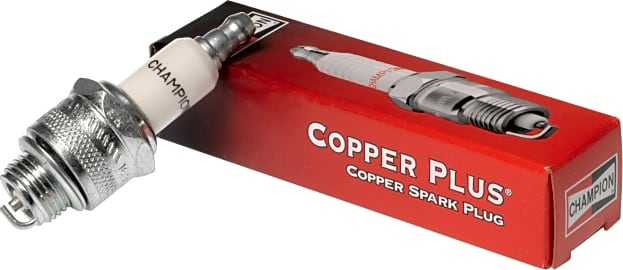The 10 Best Spark Plugs

This wiki has been updated 35 times since it was first published in January of 2017. There aren't many parts of a car as essential and easy to upgrade as its spark plugs, which require routine inspection and replacement for proper vehicle operation. Like any part, there are a variety of aftermarket options out there for increasing the efficiency and longevity of your motor. We've put together a list of great options, ranked by affordability and performance. When users buy our independently chosen editorial recommendations, we may earn commissions to help fund the Wiki.
Editor's Notes
March 15, 2021:
All of our recommendations here are still valid, partly because the actual brand of spark plug doesn't always make a huge amount of difference. Just as important are the type of engine you're working with and even its specific spark plug fitment, which can vary greatly among cars and trucks.
With that in mind, Bosch Platinum and NGK Iridium remain two of the most popular for good reason. They both offer premium build quality and perform consistently over a long period of time - longer, in fact, than some used vehicles themselves will probably last. Some options, like the Brisk Premium Evo, are meant to withstand high-octane fuel at high combustion ratios, something that only heavily tuned vehicles need to worry about. Others, such as the Champion J19LM, are engineered specifically for smaller equipment such as lawnmowers.
October 09, 2019:
Removed the Autolite 3923 because of quality-control issues. Added the E3 E3.62 because they have a very innovative design. The electrode configuration gives the arc multiple places to migrate to, which will extend the plug's life. It avoids arc-shielding concerns (which can result in inefficient combustion) because it is more open than other similarly designed plugs.
When considering what plugs to buy for your car, always follow manufacturer recommendations for electrode material. Platinum, iridium, and copper all have different heat and conductive properties whose relevance to an engine will vary. Some engines require colder plugs while others require hotter ones. As for plugs whose side electrode extends further than stock plugs, this should be avoided unless you first verify that the piston's top-dead-center is low enough to avoid contact with the plug. This should be measured from the nut and not from the base of the center electrode.
Auto repair can be dangerous and should only be performed by trained technicians to avoid personal injury or damage to equipment.
A Brief History Of Spark Plugs
It may come as a shock to anyone who's ever overheard guys yelling at each other for hours about the merits of Ford vs. Chevy, but automobile facts can be contentious issues.
It may come as a shock to anyone who's ever overheard guys yelling at each other for hours about the merits of Ford vs. Chevy, but automobile facts can be contentious issues. So, it should come as no surprise that the history of spark plugs would have highly disputed origins.
Some people believe that a man named Edmond Berger came up with the idea all the way back in 1839. However, the internal combustion engine was still in its nascent stages, so it's unlikely that Berger had both the access to prototypes and the creative spark necessary to come up with the idea.
We do know, however, that Belgian engineer Étienne Lenoir created an electric spark plug in 1860. He used it his gas-powered internal-combustion piston engine, and while he'd also go on to create electric brakes for trains and even a motorboat engine, spark plugs are still his claim to fame.
Lots of different inventors — including big names like Nikola Tesla and Robert Bosch — tried their hands at making plugs, but it was an assistant of Bosch's named Gottlob Honold that would finally engineer the major breakthrough. He came up with a high-voltage model that worked in a magneto-based ignition system, which laid the groundwork for the spark-ignition engine.
In the 1930s, a geologist named Helen Blair Bartlett developed a way to insulate plugs using alumina ceramics, which made them more durable while also improving their ability to handle high heat and voltages. This allowed engines to be more efficient, which in turn let them travel further and faster.
The basic design of the spark plug has stayed more or less constant since then, with a few slight changes. As vehicles begin to move from traditional fossil fuels to other power sources, though, it's becoming more and more likely that the technology will soon have to change to keep up — if it's not discarded entirely.
How Spark Plugs Work
If you've ever poked around under the hood, you may have a few questions, like, "Where are the spark plugs? How do they work? Why am I doing this?"
We can help with at least the first two questions.
The location of the spark plugs can vary from car to car, so check your owner's manual first. However, they're usually situated on the top or side of the cylinder head, under plug covers. Look for a bundle of 4-8 wires, as that should be a tell-tale sign that the plugs are in the area. The exact number will vary based on car model and engine size.
After the power stroke, all that heat needs to go somewhere, and the spark plug helps to transfer it from the cylinder to the cooling system.
Spark plugs are designed to ignite a mixture of gasoline and air in internal combustion engines. When the piston inside the cylinder compresses the air and gasoline at the top of its cycle (aka "top dead center"), the plug creates a spark to ignite the whole thing. If the spark goes off at anything other than the exact right time, it upsets the whole process; that's what's referred to as "the timing being off."
What happens next is basically a miniature explosion. The power of the ignition forces the piston head back down, generating force in what's known as the "power stroke."
After the power stroke, all that heat needs to go somewhere, and the spark plug helps to transfer it from the cylinder to the cooling system. Different plugs have different heat ranges, which determines their ability to dissipate that heat.
It's amazing that such tiny little devices could have such a huge impact on engine performance, but the fact of the matter is, without spark plugs, you won't get very far down the road.
How To Know When It's Time To Replace Your Plugs
Your spark plugs will have to fire thousands and thousands of times over the course of their lives, and, as with any other equipment, they get worn down with constant use.
Different makes and models can last for various amounts of time, so you should consult your owner's manual or a trusted mechanic before making any changes. Most can last at least 30,000 miles, but extended-life models are often used that can survive three times as long. You may also be able to prolong the usefulness of your plugs by adding a fuel cleaner to your tank, preventing crud from building up on the electrodes.
Different makes and models can last for various amounts of time, so you should consult your owner's manual or a trusted mechanic before making any changes.
There are a few signs you should look for if you suspect your plugs are beginning to be worn. The most obvious is the performance of the engine itself. Is it idling roughly — meaning, does it vibrate more than usual, or sound different? If so, there's likely something wrong, and checking the plugs is a good place to start.
Speaking of starting things, if your car doesn't like to wake up and get to work — and you're sure the battery is good and there's fuel in the tank — then checking the plugs is a good idea.
Beyond that, pay attention to how it handles out on the road. If it's jerky or continually starting and stopping, there's a good chance that the cylinders aren't firing properly, and the plugs are often the culprit.
Check on your fuel economy every time you gas up as well. If your chariot is sucking down the petrol at an increased pace, that might mean that there's incomplete combustion in the cylinder, which could be due to worn plugs.
Of course, there are any number of reasons why your car could be malfunctioning, so check with a mechanic before you just go blindly swapping out parts. Luckily, replacing plugs is a relatively cheap procedure, so you should be able to get your car back up and running in no time.















